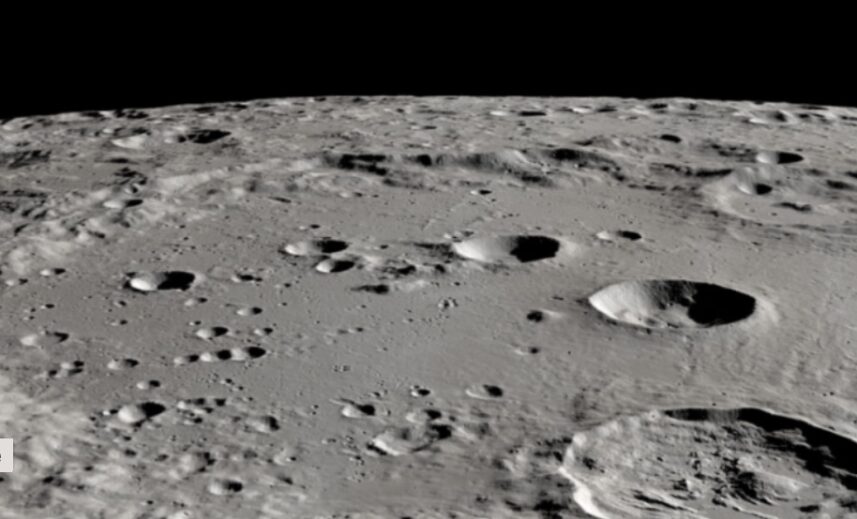
The Indian mission named Chandrayaan-3 reached today, after two attempts, the lunar south pole with its lander, after the failure of 2019 with Chandrayaan-2 and with the more recent one of Russia with its Luna 25 probe.
The spacecraft began its final descent to the lunar surface today at 14.34 pm Eastern time when it touched down near the south pole. Today's mission scores the first soft landing on the lunar surface by an Indian spacecraft and makes India the fourth country ever to accomplish such a feat, along with the United States, China and Russia, so far the only nations to have carried out controlled spacecraft landings.
Yesterday ISRO spent Christmas Eve sharing photos and videos captured with the spacecraft's cameras. A bird's eye view of the Moon from 70 kilometers (43,5 miles) above the surface was taken, showing among other things the Mare Marginis, a large black spot formed by crashed ancient asteroids. Another image, taken on Aug. 20 from a much closer vantage point as the spacecraft whizzed past, offered a close-up of the moon's gray, dusty surface.
According to the space agency, the spacecraft is able to orient its position by matching images captured by its cameras to a lunar map programmed into its on-board computer. Chandrayaan, which means "lunar vehicle" in Sanskrit, was launched from the Satish Dhawan space center in Sriharikota, in the southern Indian state of Andhra Pradesh, on 14 July. The spacecraft made a slow and methodical approach to the lunar surface.
Discovering lunar ice
Confirmation of the presence of lunar water ice at our satellite's South Pole is potentially one of the most valuable resources scientists are trying to study.
Space agencies and private companies consider the presence of lunar ice a turning point for a future lunar colony and subsequent missions to Mars.
As early as the 60s, before the first Apollo landing, scientists hypothesized that there was water on the moon. Samples that Apollo crews returned for analysis in the late 60s and early 70s appeared to be dry.
In 2008, researchers at Brown University revisited those lunar samples with new technology and found hydrogen inside tiny beads of volcanic glass. In 2009, a NASA instrument aboard the Indian Space Research Organization's Chandrayaan-1 probe detected the presence of water on the lunar surface.
That same year, another NASA probe that hit the south pole found water ice under the lunar surface. An earlier NASA mission, 1998's Lunar Prospector, found evidence that the highest concentration of water ice was in the shadowed craters of the south pole.
Scientists are interested in ancient water ice pockets because they could provide evidence of volcanoes on the moon, the material that comets and asteroids then brought to Earth and gave rise to the oceans.
If water ice exists in sufficient quantities, it could be a source of potable water for Moon exploration and could help cool equipment for subsequent missions to Mars.
It could also be broken down to produce hydrogen for fuel and oxygen for breathing, supporting other types of interspace missions or lunar mining.
The 1967 United Nations Outer Space Treaty prohibits any nation from claiming ownership of the Moon. There are, therefore, no provisions that prevent commercial operations.
A legislative effort, in this sense, is led by the United States to establish a set of principles for the exploration of the Moon and the use of its resources. Let's talk about the Artemis Accords which has 27 signatories. However, China and Russia have not signed up to it.
China and the United States also intend to carry out new lunar explorations in the south pole.
Subscribe to our newsletter!
